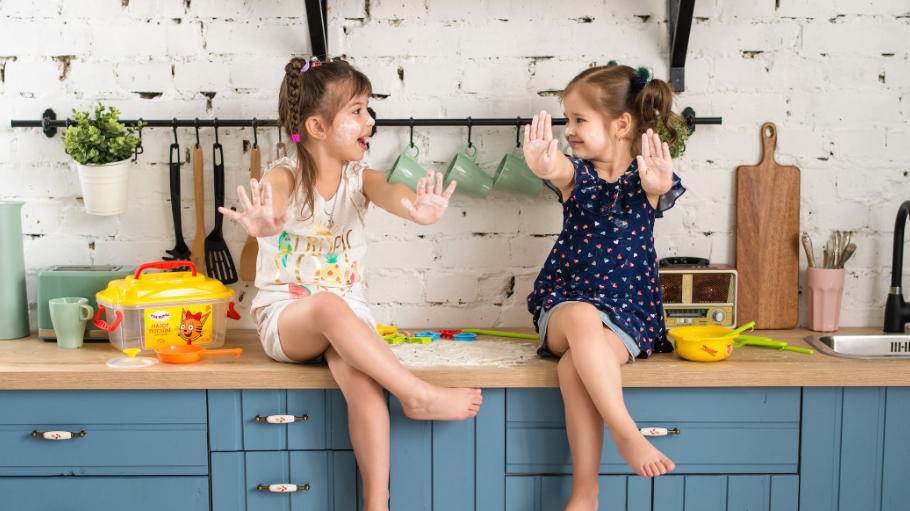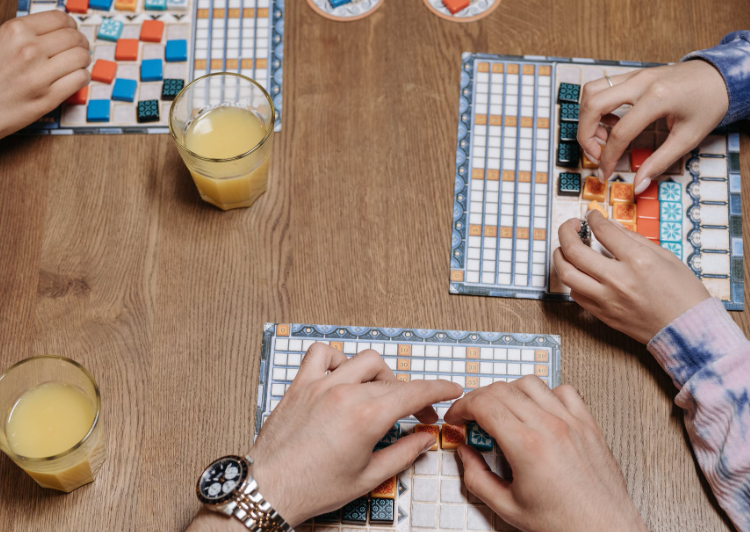Involving your children in the culinary world does more than just turn the kitchen into a bustling hub of activity; it unlocks a dynamic arena of learning, discovery, and heartfelt connection that goes well beyond the basic act of preparing meals. This transformative experience heralds the start of an enthralling journey, one that weaves together the threads of creativity, exploration, and the deepening of family ties, creating memories that are cherished for a lifetime. As parents and guardians, the responsibility of guiding this journey requires a thoughtful approach, tailoring each culinary challenge to match the age and abilities of your children.
For the youngest members of the family, toddlers can be introduced to the wonders of cooking through engaging yet simple tasks such as washing fruits and vegetables, stirring batter, or sprinkling ingredients, activities that ignite their curiosity and sense of involvement without overwhelming them. As children grow and their skills develop, the culinary tasks can evolve to include more complex techniques such as measuring ingredients accurately, kneading dough, and eventually, mastering the art of chopping and cooking under supervision. This gradual progression not only ensures safety but also builds their confidence and competence in the kitchen.

Moreover, this shared journey through the world of culinary arts offers invaluable lessons in nutrition, mathematics, science, and cultural studies, as children learn about different ingredients, cooking methods, and the origins of various dishes. It encourages them to experiment and take creative risks, fostering a sense of accomplishment and independence.
Furthermore, cooking together provides a unique opportunity for family members to communicate, collaborate, and bond over the creation of meals, reinforcing the kitchen’s role as a center of family life. Through these shared experiences, children not only acquire practical cooking skills but also develop an appreciation for the joy of creating and sharing meals, setting the foundation for a lifetime of healthy eating habits and a love for culinary exploration.
Creating a safe, child-friendly kitchen environment is paramount, necessitating constant supervision, especially when children handle potentially dangerous tools or are near hot surfaces. Equipping them with utensils designed for their safety and ensuring hazardous items are beyond reach are critical steps in fostering a secure learning space.
To maintain their interest, opt for engaging, hands-on recipes that allow them to be creatively involved, from kneading dough to decorating pastries. Thematic cooking days, like Pizza Friday or Taco Tuesday, add an element of excitement and anticipation to their culinary explorations. Moreover, cooking offers a wealth of educational opportunities, making it possible to introduce basic math, scientific principles, and even history through the stories of different cuisines.

Fostering a space where children can freely explore their creativity and independence within the culinary realm serves not only as a platform for developing their cooking skills but also significantly enhances their self-esteem and autonomy. This liberating experience allows them to delve into the art of cooking through trial and error—mixing, matching, and sometimes even inventing new recipes or adding a personal twist to traditional ones. It’s about letting them take the lead, whether it’s in choosing the next meal to prepare or decorating a cake with their flair. Such activities not only cultivate their culinary intuition but also encourage them to think creatively and make independent decisions.
However, with this exploration comes the inevitable spills, splatters, and scattered ingredients. Yet, rather than viewing this mess as a setback, it’s beneficial to see it as an integral component of the learning process—a testament to their hard work and creativity. It’s an opportunity to teach responsibility, as children can learn to clean up after themselves, turning even the cleanup into a fun and educational activity. Emphasizing the enjoyment and the shared laughter over the pristine condition of the kitchen can help in building a positive and enduring relationship with food and cooking.
Moreover, the act of sharing their culinary masterpieces with others plays a pivotal role in enhancing their sense of community and empathy. Whether it’s a simple dish prepared with love or an elaborate meal, the act of giving something they’ve made themselves teaches valuable lessons in kindness and generosity. This external validation, from the smiles and compliments of those who taste their creations, further cements their confidence and pride in their abilities.
Instilling the principles of safety and hygiene early on is paramount to ensure that the kitchen remains a safe haven for creativity. Teaching children about the dangers of sharp knives, hot surfaces, and the importance of keeping their workspace clean not only safeguards them but also ingrains a sense of responsibility and respect for the tools and space they use. Lessons on food safety, like the importance of washing hands before cooking or the proper way to handle raw ingredients, are crucial life skills that extend beyond the kitchen, preparing them for a lifetime of safe and enjoyable cooking experiences.

In this expanded culinary adventure, the kitchen transforms into a vibrant classroom where life skills are taught, bonds are strengthened, and the foundations of a healthy lifestyle are laid. By navigating the challenges and celebrating the triumphs of cooking together, children are equipped with not just the practical skills of meal preparation, but also the values of creativity, independence, and collaboration—qualities that will serve them well throughout their lives. The act of cooking together transcends the mere preparation of meals, evolving into a shared adventure filled with laughter, learning, and love. When children see their culinary creations become the focal point of a family dinner or receive the smiles and thanks of friends and neighbors, they experience a deep sense of accomplishment and learn the joy of giving.
These experiences instill in them not only a sense of pride in their achievements but also an understanding of the importance of generosity and sharing. However, the journey into the culinary world with children is not without its lessons on responsibility and safety. It is imperative to instill in them the principles of kitchen safety and hygiene from an early age. Educating young cooks about the necessity of washing hands thoroughly before and after handling food, the proper ways to navigate the dangers of hot surfaces, and the cautious use of sharp tools is fundamental. These practices ensure that the kitchen remains a safe space for exploration and creativity. Moreover, this journey offers more than just practical cooking skills; it lays the foundation for a holistic education that encompasses the appreciation of food’s value, the communal joy found in cooking and sharing meals, and the significance of fostering connections with others through food.
Therefore, as you embark on this culinary adventure with your children, remember that the lessons learned extend far beyond the recipes and cooking techniques. You are nurturing in them a rich tapestry of values—creativity, confidence, compassion, and community. These lessons are invaluable, equipping them with the tools to navigate not just the kitchen but life itself with a sense of capability and joy. By fostering an environment where food becomes a medium for education, connection, and growth, you are helping to shape well-rounded individuals who understand the importance of nourishment, the power of shared experiences, and the enduring value of caring for and about others. This journey, with its blend of teaching, learning, and bonding, is a profound expression of love—one that prepares children for a lifetime of meaningful relationships with food, family, and their broader community.
Check the video below to see good recipes to cook with kids!






